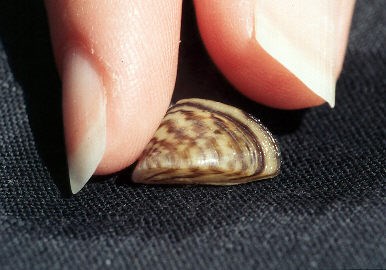Welcome to Week CLXXXII of ‘Fishing Parkland Shorelines’. Like most of us I am a novice fisherman, loving to fish, but far from an expert. In the following weeks I’ll attempt to give those anglers who love to fish but just don’t have access to a boat, a look at some of the options in the Yorkton area where you can fish from shore, and hopefully catch some fish.
A release popped through the editorial email at the office recently, which as a fisherman, caught my eye.
The Government of Saskatchewan was reminding residents to be diligent in helping to stop aquatic invasive species, such as zebra and quagga mussels, from entering the province’s lakes and waterways.
The release noted recent tests confirm Saskatchewan’s water bodies remain free from the presence of invasive species including zebra and quagga mussels; however, these small but destructive mussels have been discovered in some neighbouring provinces and states, and residents should take steps to prevent the spread into Saskatchewan.
“The boating season may be over, but it is still important to thoroughly clean, drain and dry watercraft and all related equipment prior to next year to help ensure they are free of invasive species before transporting from one body of water to another,” Environment Minister Herb Cox said in the release. “This includes recently purchased or imported watercraft, and water structures such as docks, slides and buoys. If it comes from outside of Saskatchewan, be vigilant to protect our provincial waters.”
The news is not as positive in Manitoba where it was recently reported that zebra mussel larva was found in a water sample from Cedar Lake, approximately 265 kilometres east of Nipawin, SK. Invasive species have also been confirmed in Manitoba’s Lake Winnipeg and in North Dakota water bodies.
Species such as zebra and quagga mussels can be impossible to eliminate if they become established in a water body, and have the potential to severely impact aquatic habitats, fisheries, valuable recreational resources and water-related infrastructure.
With such news I went looking for more information on the mussels.
“The native distribution of the species is in the Black Sea and Caspian Sea in Eurasia,” detailed Wikipedia. “Zebra mussels have become an invasive species in North America, Great Britain, Ireland, Italy, Spain, and Sweden. They disrupt the ecosystems by monotypic colonization, and damage harbors and waterways, ships and boats, and water treatment and power plants. Water treatment plants are most affected because the water intakes bring the microscopic free-swimming larvae directly into the facilities. The zebra mussels also cling to pipes under the water and clog them.
“Grossinger reported it in Hungary in 1794. Kerney and Morton described the rapid colonization of Britain by the zebra mussel, first in Cambridgeshire in the 1820s, London in 1824, and in the Union Canal near Edinburgh in 1834. In 1827 zebra mussels were seen in the Netherlands at Rotterdam. Canals that artificially link many European waterways facilitated their early dispersal. It is non-indigenous in the Czech Republic in Elbe river in Bohemia since 1893; in southern Moravia it is probably native.
“Around 1920 the mussels reached Lake Mälaren in Sweden.
“The first Italian appearance of the organism was in northern Italy in Lake Garda in 1973; in central Italy they appeared in Tuscany in 2003.
“Zebra mussels are also present in British waterways. Many water companies are reporting having problems with their water treatment plants with the mussels attaching themselves to pipeworks. Anglian Water has estimated that it costs £500,000 per year to remove the mussels from their treatment plants. It has been argued that zebra mussels also have had an effect on fish populations, with dwindling fish populations in areas such as Salford Quays.
“They were first detected in Canada in the Great Lakes in 1988, in Lake St. Clair, located east/northeast of Detroit and Windsor. It is believed they were inadvertently introduced into the lakes in the ballast water of ocean-going ships traversing the St. Lawrence Seaway. Another possible often neglected mode of introduction is on anchors and chains, although this has not been proven. Since adult zebra mussels can survive out of water for several days or weeks if the temperature is low and humidity is high, chain lockers provide temporary refuge for clusters of adult mussels that could easily be released when transoceanic ships drop anchor in freshwater ports. They have become an invasive species in North America, and as such they are the target of Federal policy to control them, for instance in the National Invasive Species Act (1996).”
Continued next week.




